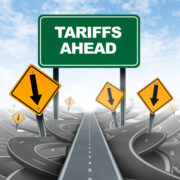At the beginning of the week of December 5-9, 2016, the Codex Committee on Nutrition and Foods for Special Dietary Uses (CCNFSDU) became the very thing that Codex Secretariat Tom Heilandt warned against in his opening speech there — “lazy monkeys.” For those unfamiliar with that term, it is loosely translated as “being lazy for no reason and not functioning properly.” On the debate over the daily Nutrient Reference Values (NRVs) for Vitamin D and Vitamin E, the bulk of the Committee weakly argued and agreed amongst themselves that the World’s population does not need adequate blood levels of either Vitamin D or Vitamin E. In particular, the CCNFSDU decided that 5-15 micrograms (200-600 IUs) /day of Vitamin D and 9 milligrams (13.5 IUs)/day of Vitamin E are all that humanity needs. Lazy monkeys.
As anyone with even a smidgen of nutritional knowledge knows, both Vitamin D and Vitamin E are critical for human health, and at far greater amounts than first thought. Long gone are the days when rational nutritionists and researchers thought that 400 IUs per day (10 mcg/day) of Vitamin D would sustain optimal health. And for those who live in that fairy-tale land where 13.5 IUs per day (9 mg/day) of Vitamin E will support normal fertility and childbirth, or health at any level, a very special place in Hell is reserved. Or else on a delegation at a Codex committee.
The Vitamin-D NRVIn point of which, on the Vitamin-D NRV, there were only three choices presented to the Committee: 5 mcg (200 IUs)/day, 10 mcg (400 IUs)/day, and 15 mcg (600 IUs)/day — parsimonious by any reasonable health standard. To their credit, the United States, Canada, Chile, Indonesia, Thailand, Egypt, Switzerland, Panama, and Malaysia all spoke up for the higher Vitamin-D level. Curiously, the Council for Responsible Nutrition (CRN) did not speak up; but it did conduct an excellent pre-meeting seminar for Codex delegates as well as submit a very powerful and well-crafted document supporting much higher daily levels for Vitamin D. Chile, I must say, was amazing, firmly stating that “the 15-microgram-a-day level is not even enough to start dealing with our nutritional needs.”
The National Health Federation (NHF), of course, argued both in writing and at the meeting for significantly higher Vitamin-D levels, stating in particular that the Institutes of Medicine (IOM) had badly miscalculated the RDA for Vitamin D. It turns out that Canadian scientists had discovered that the IOM made significant mistakes in calculating the daily value for Vitamin D. Their analyses showed that rather than 600 IUs (15 mcg) per day, it would take 8,895 IUs per day to achieve 25(OH)D above 50 nmol/L in 97.5% of the population using data from 8 of the 10 studies that the IOM considered (the other two studies did not report all necessary information). In short, the NRV should be 8,895 IUs (or 222.37 micrograms) per day. NHF suspects that this statistical mistake has been replicated in one form or another by the other Recognized Authoritative Scientific Bodies (RASBs) that Codex relies upon. On behalf of NHF, we heavily lobbied the delegations during every meeting break to support the highest NRVs.
The usual anti-health suspects — Australia, New Zealand, Mexico, and Brazil, surprisingly supported by China, India, and the EU — agitated in favor of the sub-optimal levels (400 IUs/day) of Vitamin D, while a couple of African countries thought that 5 mcg/day would be sufficient because, as the Senegal delegate (a doctor no less) put it, “In 40 years, I have never seen a case of rickets in Senegal.” Of course not, since Senegal is only 14.5 degrees north of the Equator. Try Detroit, MI at 42 degrees north of the Equator, where almost 100% of African-American babies delivered in the wintertime are born with rickets! And I said exactly that to the Committee when NHF spoke out on this issue.
The European Food Safety Authority (EFSA) had just come out in November with its opinion that the daily level for Vitamin D should be set at 15 mcg (600 IUs) per day. A normal person would think that the EU delegation would accordingly argue strenuously for this higher level. A normal person, though, would be completely wrong. Without blinking an eye, the EU delegation — led by spokeswoman Stephanie Bodenbach — caved and threw away the critical 15-member voting block that could have held tough for higher Vitamin-D levels by meekly submitting to the lower 10 mcg/day NRV.
After a brief break, the CCNFSDU Chairwoman, Dr. Pia Noble, tried to save the situation by announcing that it appeared that most delegates were in favor of the 15 mcg/day level, but Australia and New Zealand swooped in on her like hawks, disagreeing strenuously. Had the EU simply stood on the EFSA position of a 15 mcg/day NRV, then the Chairwoman could have prevailed; but with the EU having deserted the field, Dr. Noble had little choice but to stretch for the best deal possible — a range of all three possibilities so as to include the higher range. In the end, the CCNFSDU set the Vitamin-D NRV at a range of 5 mcg to 15 mcg per day.
The Vitamin-E NRVThe first battle over the Vitamin-E NRV was not actually about a number value but rather was about what form, or isomer, of Vitamin E should be the “measuring stick” for the Vitamin-E NRV. Unsurprisingly, most Codex delegates are extremely one-dimensional when it comes to Vitamin E. For them, there exists only the alpha-tocopherol form of Vitamin E, which current research shows actually reduces the gamma and delta forms when used alone as Codex proposes; all of the others — the beta, delta, and gamma tocopherols as well as the four tocotrienols — have no value, serve no purpose, and are nutritionally worthless. NHF has strongly disagreed with Codex over the years, siding instead with science. But lazy monkeys clearly don’t have time for current science.
Fortunately, Malaysia is a Codex exception and has put substantial thought and time into its own pro-multi-tocopherol and multi-tocotrienol position. Its written submission to the Committee was a concise and very well-supported research document, while Malaysia’s oral arguments at the meeting in favor of a multi-tocopherol and multi-tocotrienol approach to the Vitamin-E complex reflected cutting-edge nutritional science. Indonesia, the Philippines, and NHF strongly supported Malaysia’s arguments. However, Australia’s and the EU’s “flat earth” arguments prevailed and alpha-tocopherol was declared to be the sole and only nutritionally worthwhile isomer of the Vitamin-E complex. Nature, evidently, is not as wise as these lofty Codex delegates.
The discussion then shifted to setting an actual daily value (NRV) for Vitamin E. Incredibly, the only choices presented to the Committee were an NRV at 9 mg/day, 12 mg/day, or 15 mg/day. In American and Canadian terms that means 13.5 IUs/day, 18 IUs/day, or 22.5 IUs/day; all negligible amounts. I myself take 400 IUs per day and have for decades. The pitiful daily levels proposed at this meeting guarantee nothing but suboptimal health and reduced fertility.
But of course that did not stop Australia from once again pushing for the lowest daily level possible, 9 mg. As I have said for a long time now, if one day you accidentally stumble into a Codex meeting and know absolutely nothing about what is going on, then just listen for Australia’s position on any given issue. By taking the exact opposite position, you will know that you are supporting optimal health. It really is that easy.
It was also very easy for the EU, which once again tripped over its feet while rushing to accommodate Australia and bad nutrition, all while once again ignoring its own scientific body’s opinion. “The EU supports 12 mg but could agree to 9 mg because of the overwhelming support,” the feckless Bodenbach intoned once again while creating out of thin air the myth of “overwhelming support.” Thank you Ms. Bodenbach for throwing good nutrition — and your fellow citizens — under the bus and stepping on the accelerator as you did so.
Both China and the Russian Federation disagreed with Australia and the EU, with China arguing strongly for a 14 mg/day NRV and the Russians for 12 mg/day. FoodDrinkEurope, a Codex INGO, stated its support for a 12 mg or higher NRV, while NHF argued for a level far higher than any other delegation.
In effect, NHF told the Codex Committee — comprised of some 360 participants — in no uncertain terms that it would be madness to accept less than 15 mg per day as the Vitamin-E NRV in light of recent studies showing that most of the population would be left deficient in Vitamin E if the 9 mg per day NRV were adopted. NHF also submitted written comments, as did the Council for Responsible Nutrition, on this and the Vitamin-D NRV issue. The United States finally spoke up but, ignoring its own government’s recommended daily allowance of 15 mg per day for Vitamin E, supported the lowest level of 9 mg per day. The U.S. delegate, a Food and Drug Administration (FDA) bureaucrat, simply proved once again that the FDA is a rogue agency that does whatever it wants and the American consumer can be damned.
But for the EU’s and U.S.’s betrayal of their own respective scientific bodies and citizens, the Codex Committee would have provided for a higher NRV for Vitamin E. Instead, we can thank both for their deliberate stab in the back that surprised us and others who had expected a higher and healthier NRV for Vitamin E to be set in place of the pathetic 9 mg per day NRV ultimately announced by the Chairwoman.
NHF Delegation at 2016 CCNFSDU Hamburg, Germany MeetingFollow-Up Formula for Infants. Yet another long and contentious issue debated at this CCNFSDU meeting was the Committee’s review of the standard for Follow-Up Formula (FUF). FUF is a relatively new market segment created to sell formula to those infants and young children six to 36 months of age.
Various baby formula consumer groups were buzzing all over this topic like flies on cow patties, while Nestle and other business-interest groups defended a follow-up formula that many others claim is nothing more than a marketing ploy to sell more formula to a largely untapped, older-infant market segment that would normally have transitioned to their culture’s indigenous diet. Part of the battle is over the placement of this product on store shelves near infant formula, using similar packaging and colors, which would imply that it is next in the progression; marketing deception at its most subtle.
The Infant Baby Formula Action Network (IBFAN), one of the consumer groups at this meeting which, like NHF, favor natural breast milk over formula, highlights the greed factor here. In a recent press release, IBFAN stated, “[t]hese processed, expensive, sweetened and flavored milks targeting 6–36 month old children account for 50% of absolute growth in a formula market that is set to rise by 55% from US $45 billion to US $70 billion by 2019.” When the dust settled at the end of this agenda item’s discussion, both sides seemed content — the formula manufacturers because the FUF standard was still progressing, which when adopted will give international legitimacy to this product, and the infant-formula consumer groups because CCNFSDU agreed to include a reference to WHO’s recommendations for strict controls on the marketing and labeling of formulas for babies over six months.
Biofortification.As at last year’s CCNFSDU meeting, an electronic Working Group (eWG), headed by South Africa and Zimbabwe, once again put forth suggested definitions of “Biofortification” to the Committee. But, the key question was whether the definition should be broad enough to include genetically modified (GM) (recombinant-DNA) technology within it.
Those pushing a standard for Biofortification, particularly the International Food Policy Research Institute (IFPRI) led at Codex by the diplomatic Dr. Anne Mackenzie of Canada, claim that Biofortification itself as a concept is neutral and that it would be up to each country to decide for itself whether Biofortification would include recombinant-DNA technology or not. To them, Biofortification is simply the process by which the nutritional quality of food crops is improved through plant breeding with the aim of making the nutrients bioavailable after digestion. To most of us, that means “conventional” plant breeding. However, some would like to convert Biofortification into a Trojan Horse that will allow GM foods to slip into those countries that currently ban such foods.
The Chairwoman (who is married to a Bayer pharmaceutical executive) started off the discussion by giving her incorrect personal opinion that the definition should be as broad as possible and that recombinant technology should be included. Her statement, though, directly contradicted Australia’s admission last year that if the Committee were to refer to the original 2012 document on the scope of Biofortification, we would see that Biofortification only refers to conventional breeding and so we should clearly exclude GM techniques. This year Australia was silent on the issue.
The EU raised a new but valid objection that the very name “Biofortification” would cause confusion in many European countries due to the widespread use of the word “bio” as synonymous with “organic.” Belgium was very vocal and supported the EU’s position here as well as arguing that the definition needs to be restrictive, not broad. Sudan supported Belgium; while Ireland warned the Committee against the risks of monoculture, stating that what was needed here was biodiversity. Both the FAO and the WHO let the delegates know that they were looking into Biofortification and that the WHO’s full systematic review of it would not be available until January 2017.
India proposed its own restrictive definition that excludes GM techniques. NHF strongly supported India’s definition and challenged the Chairwoman’s statement that the definition must be as broad as possible. NHF specifically warned the delegates that allowing GM techniques within the definition of Biofortification would create a Trojan Horse for the introduction of GM foods into markets previously excluding them. The United States, Mexico, Canada, and New Zealand of course wanted the broad definition that would allow biotechnology. In the end, nothing was resolved and the Chairwoman re-authorized the eWG so that it could work further on the definition.
OverviewAlthough other issues were discussed at this meeting, the four that elicited the most interest and emotion were the ones discussed above. And of those four, the most disappointment lay in the thrown-away opportunities to raise the NRV for Vitamin D and Vitamin E to healthier levels. Had the European Union stood its ground and followed the EFSA’s own findings on both vitamins, then we would now be looking at a higher daily value for both. On the Vitamin-D NRV, the Chairwoman practically laid down a carpet to make it so easy for the EU to ask for the higher level called for by EFSA. But in its eagerness to please, the EU compromised away its moral high ground, so much so that the words “the EU compromised” appeared so many times in the Final Report of the meeting that Thailand called the phrase into question and it was removed!
NHF even raised the ugly specter of racism in Codex’s blatant disregard of the effect of low Vitamin-D levels on the health of darker-skinned people living in higher latitudes. Apparently, Codex turns a blind eye to this demographic, condemning them to a greater incidence of ill health and early death than the fairer-skinned populace, which absorbs sunlight more readily. General George Patton said that “it is better to fight for something than to live for nothing.” Those at Codex who compromise downwards from scientific truths do a great disservice to themselves, their own families, and all of those countless millions who depend upon them. They are not fighting for something, they are living for nothing. Codex lazy monkeys.WF
Published in WholeFoods Magazine February 2017
A graduate of the University of California at Berkeley Law
 School, Scott C. Tips currently practices internationally, emphasizing Food-and-Drug law, business law and business litigation, trade practice, and international corporate formation and management. He has been involved in the nutrition field for more than three decades and may be reached at (415) 244-1813 or by e-mail at scott@rivieramail.com.
School, Scott C. Tips currently practices internationally, emphasizing Food-and-Drug law, business law and business litigation, trade practice, and international corporate formation and management. He has been involved in the nutrition field for more than three decades and may be reached at (415) 244-1813 or by e-mail at scott@rivieramail.com.









